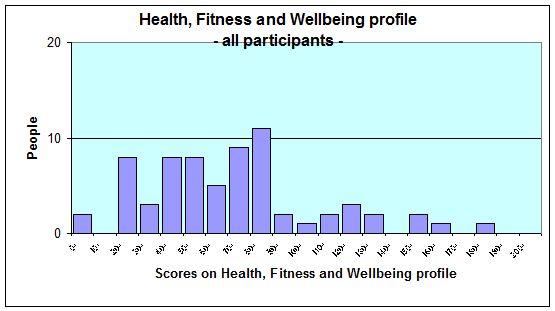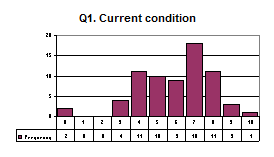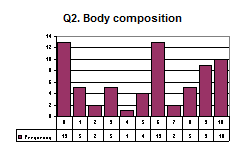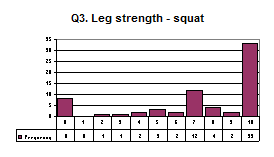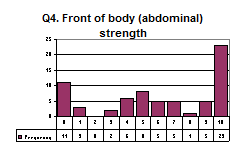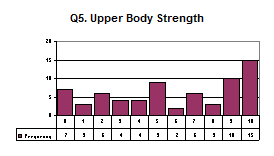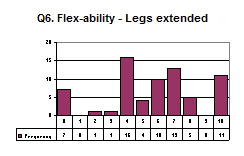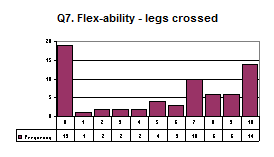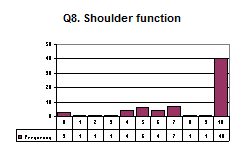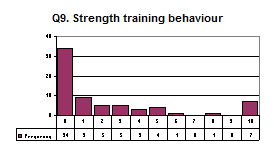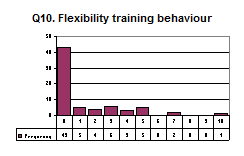|
|
|
|||||||||||||||||||||||||||||||||||||||||||||||||||||||||||||||||||||||||||||||||||||||||||||||||||||||||||||||||||||||||||||||||||||||||||||||||||||||||||||||||||||||||||||||||||||||||||||||||||||||||||||||||||||||||||||||||||||||||||||||||||||||||||||||||||||||||||||||||||||||||||||||||||||||||||||||||||||||||||||||||||||||||||||||||||||||||||||||||||||||||||||||||||||||||||||||||||||||||||||||||||||||||||||||||||||||||||||||||||||||||||||||||||||||||||||||||||||||||||||||||||||||||||||||||||||||||||||||||||||||||||||||||||||||||||||||||||||||||||||||||||||||||||||||||||||||||||||||||||||||||||||||||||||||||||||||||||||||||||||||||||||||||||||||||||||||||||||||||||||||||||||||||||||||||||||||||||||||||||||||||||
|
Health Fitness and Wellbeing Seminar Results |
||||||||||||||||||||||||||||||||||||||||||||||||||||||||||||||||||||||||||||||||||||||||||||||||||||||||||||||||||||||||||||||||||||||||||||||||||||||||||||||||||||||||||||||||||||||||||||||||||||||||||||||||||||||||||||||||||||||||||||||||||||||||||||||||||||||||||||||||||||||||||||||||||||||||||||||||||||||||||||||||||||||||||||||||||||||||||||||||||||||||||||||||||||||||||||||||||||||||||||||||||||||||||||||||||||||||||||||||||||||||||||||||||||||||||||||||||||||||||||||||||||||||||||||||||||||||||||||||||||||||||||||||||||||||||||||||||||||||||||||||||||||||||||||||||||||||||||||||||||||||||||||||||||||||||||||||||||||||||||||||||||||||||||||||||||||||||||||||||||||||||||||||||||||||||||||||||||||||||||||||||||
|
26. RANDY - February 2014
John Miller conducted the Global Back Care Musculo-skeletal Health Seminar for The Group in February 2014.
70 participants (23 women and 47 men) completed the
- Health, Fitness and Wellbeing profile.
- Musculo-skeletal Risk profile.
The results are presented in graphic format, with commentary.
Health, Fitness and Wellbeing Profile The Health, Fitness and Wellbeing profile provides people with a very good idea of how well the various systems of the body are functioning, particularly the
• the mind • autonomic nervous system • immune system • digestive system • circulatory system • elimination system • musculo-skeletal system.
On this profile a good score is a low score.
The score of a normal, fit and healthy human being is less than 20. Higher scores are symptomatic of dysfunction of one or more body systems. People with low levels of fitness and high levels of stress usually score well over 100.
For people with a score of more than 80, the ‘background noise’ of their life is becoming louder and louder. It is hard to concentrate on your work when body systems are dysfunctional. We know a fit and healthy group when we see the majority of scores below 40. This was not the case with this group.
By and large higher scores are usually a reflection of
• low levels of fitness
• an inability to deal with what life and work are serving up to people.
Remember, it is not what happens, but how we deal with what happens that determines our level of stress.
Classification of average scores: Excellent - less than 40. Good - 41 - 50. Reasonable 51-60. Poor - over 60.
This profile is described as poor. The average score was 71. Anyone scoring more than 80 is putting up with a lot of 'background noise'. The redeeming feature of the assessment is that most people can halve their score within three months, if they embark on a vigorous aerobic exercise, strength and flexibility training program and lay off the garbohydrates (yep, that's a 'g' not a 'c'.
Health Climate Survey Based on scores received in the Health, Fitness and Wellbeing profile we've compiled a Health Climate Survey. Scores on each item have ranked - the higher the score the worse the problem. We added the scores for each item. The results appear in the table below.
An extra-ordinary number of people indicated they were under-appreciated at work. It is usually about the same percentage of people who indicate they were in the wrong job.
Musculo-skeletal Risk factor Profile
The musculo-skeletal risk factor profile looked at a range of parameters including mobility, strength and flexibility and whether people are training to keep themselves strong and flexible. The musculo-skeletal risk factor profile is comprised of the following test items: • Current musculo-skeletal condition • Closeness to ideal weight • leg strength • Abdominal strength test • Upper body strength test • Flexibility • Ability to sit up straight with legs crossed • Shoulder function • Strength training behaviour • Flexibility training behaviour.
The 'pass mark' for each individual t4est item is 7/10. The 'pass mark' for the test overall is 70/100.
A score of 70% is attainable by those who have a regular and systematic training program.
Those scoring less than 70 are not doing sufficient in the way of strength and flexibility exercises. They are therefore exposing themselves to a high risk of musculo-skeletal dysfunction. (It would be bizarre for a workplace to offer to pay the rehabilitation costs of people who were not keeping themselves strong enough or flexible enough to do their job without succumbing to musculo-skeletal dysfunction, wouldn't it?)
Fit for Work
Pressups, situps and squats in 60 seconds
A fair standard for people to aim at would be the Bronze Award - 20 situps, 20 pressups and 20 squats. You wouldn't judge anyone who failed to reach the bronze level as being fit for work.
In our estimation too many people in this group were
not Fit-for-Work. Recommendations
Measure risk and Manage Risk There is an epidemic of personally-generated musculo-skeletal dysfunction in our workplaces.
Most organisations neither measure the risk nor manage it.
Their workers compensation insurer doesn't measure the risk either. They don't rate premiums against individual risk.
We recommend the Organisation take seriously and monitor carefully the incidence of personally-generated musculo-skeletal dysfunction and put in place an organisation-wide strategy to improve strength, flexibility and mobility. A high proportion of people do not have a strength and flexibility program. As a result they are getting weaker and tighter by the week, thereby exposing themselves and the organisation to risk.
A high proportion of people said they would willingly agree to take part in a daily exercise program to improve their musculo-skeletal health.
A high proportion of people said they'd take part in a prehab program.
When push comes to shove and people become dysfunctional, it will be the Organisation that ends up paying the high cost of an avoidable musculo-skeletal complaint. In our opinion musculo-skeletal dysfunction caused by lack of a regular and systematic strength and flexibility program cannot be classified as an injury.
Responsibility for musculo-skeletal dysfunction needs to be sheeted home to individual employees, though it’s unlikely to happen without the establishment of a culture within the Organisation that supports, values and understands the importance of staff keeping themselves strong and flexible.
We recommend a range of strength and flexibility classes that are readily available Australia-wide: -
The Organisation would place itself in the forefront of OH&S practice if it took the musculo-skeletal risk seriously and moved heaven and earth to educate all staff about this risk and obligated them to take part in a regular strength and flexibility program.
Maybe The Organisation and its worker's compensation insurer could invest in a pilot program to increase staff strength and flexibility! The lack of strength and flexibility training coupled with poor abdominal strength, upper body strength, flexibility and shoulder function is a cause for concern and needs the attention of individual staff and managers.
Prehab and rehab classes
We strongly recommend that the people who are in current poor musculo-skeletal condition and who lack abdominal strength, upper body strength, flexibility, shoulder function and functional mobility, in particular those who - who failed to attain the Fit-for-Work Bronze Award - be obligated to attend regular, in-house strength and flexibility classes. The pressure on the organisation's workers' compensation costs is such that to do otherwise would, in our opinion be to abrogate a responsibility for the prudent management of the organisation's finances.
Miller Health In association with Integrated Health Systems 7 Salvado Place Stirling ACT 2611 (02) 6288 7703
|
||||||||||||||||||||||||||||||||||||||||||||||||||||||||||||||||||||||||||||||||||||||||||||||||||||||||||||||||||||||||||||||||||||||||||||||||||||||||||||||||||||||||||||||||||||||||||||||||||||||||||||||||||||||||||||||||||||||||||||||||||||||||||||||||||||||||||||||||||||||||||||||||||||||||||||||||||||||||||||||||||||||||||||||||||||||||||||||||||||||||||||||||||||||||||||||||||||||||||||||||||||||||||||||||||||||||||||||||||||||||||||||||||||||||||||||||||||||||||||||||||||||||||||||||||||||||||||||||||||||||||||||||||||||||||||||||||||||||||||||||||||||||||||||||||||||||||||||||||||||||||||||||||||||||||||||||||||||||||||||||||||||||||||||||||||||||||||||||||||||||||||||||||||||||||||||||||||||||||||||||||||
